July 5, 2024 | Fed Balance Sheet QT: -$34 Billion in June, -$1.74 Trillion from Peak, to $7.22 Trillion, Lowest since November 2020

otal assets on the Fed’s balance sheet dropped by $34 billion in June, to $7.22 trillion, the lowest since November 2020, according to the Fed’s weekly balance sheet today. Since the end of QE in April 2022, the Fed has shed $1.74 trillion.
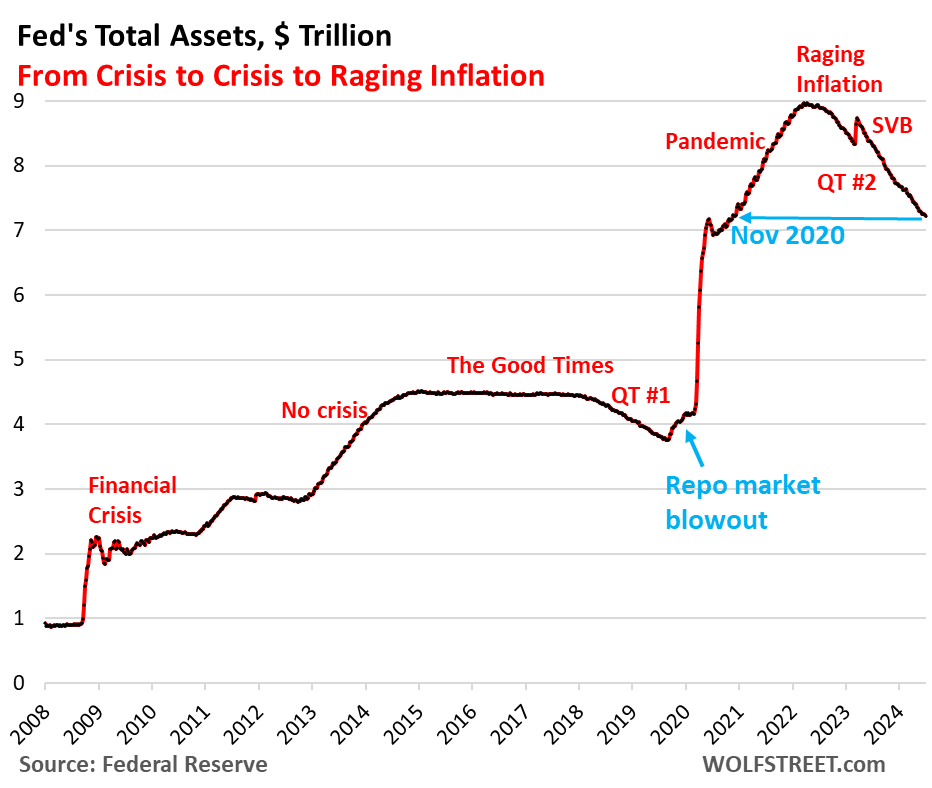
At its FOMC meeting in May, the Fed outlined how it will slow QT in order to get the balance sheet down as far as possible without blowing anything up, by slowly approaching the unknown level below which liquidity is too low, to avoid another debacle, such as the repo market blowout in September 2019 that caused the Fed to undo a big part of QT-1 (blue in the chart above).
June was the first month at the new pace of QT that reduces the cap for the Treasury runoff to $25 billion a month, but removes the cap for the MBS runoff, and whatever MBS come off, will just come off; any amount over $35 billion will be reinvested in Treasury securities, in line with the plan to get rid of MBS entirely over the “longer term.”
QT by category.
Treasury securities: -$23 billion in June, -$1.33 trillion from peak in June 2022, to $4.38 trillion, the lowest since September 2020.
The Fed has now shed 41% of the $3.27 trillion in Treasury securities that it had added during pandemic QE.
Treasury notes (2- to 10-year) and Treasury bonds (20- & 30-year) “roll off” the balance sheet mid-month and at the end of the month when they mature and the Fed gets paid face value. The roll-off is now capped at $25 billion per month, and about that much rolled off in June, minus the inflation protection the Fed earns on Treasury Inflation Protected Securities (TIPS) which is added to the principal of the TIPS.
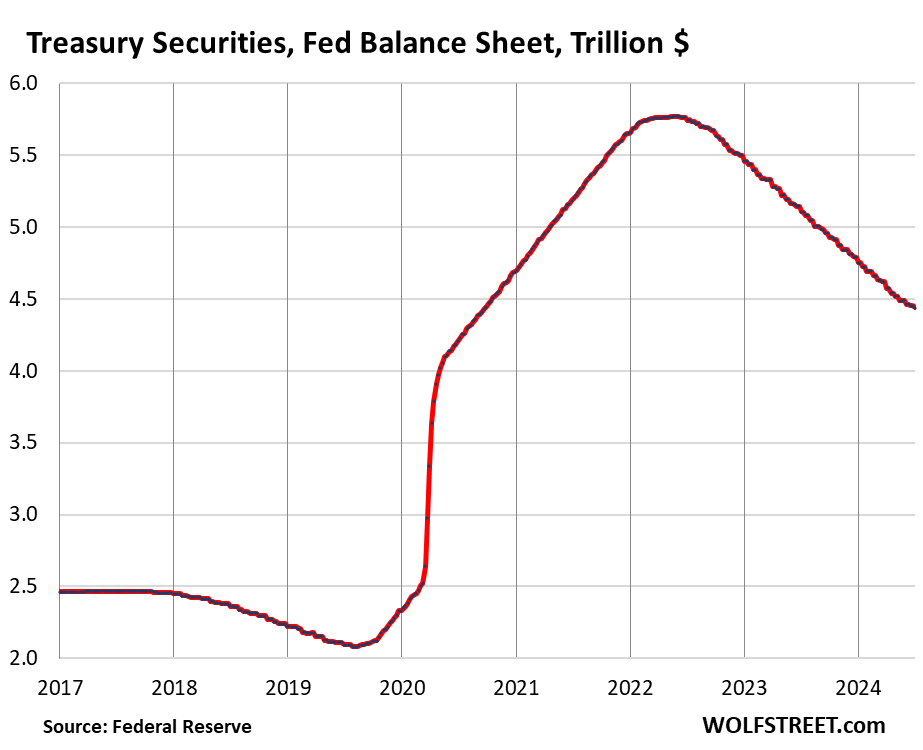
Mortgage-Backed Securities (MBS): -$19 billion in June, -$404 billion from the peak, to $2.34 trillion, the lowest since July 2021. The Fed has shed 29% of the MBS it had added during pandemic QE.
MBS come off the balance sheet primarily via pass-through principal payments that holders receive when mortgages are paid off (mortgaged homes are sold, mortgages are refinanced) and when mortgage payments are made. But sales of existing homes have plunged, and mortgage refinancing has collapsed, and so fewer mortgages got paid off, and passthrough principal payments to MBS holders, such as the Fed, have been reduced to a trickle. As a result, MBS have come off the balance sheet at a pace that has been below $20 billion in most months.
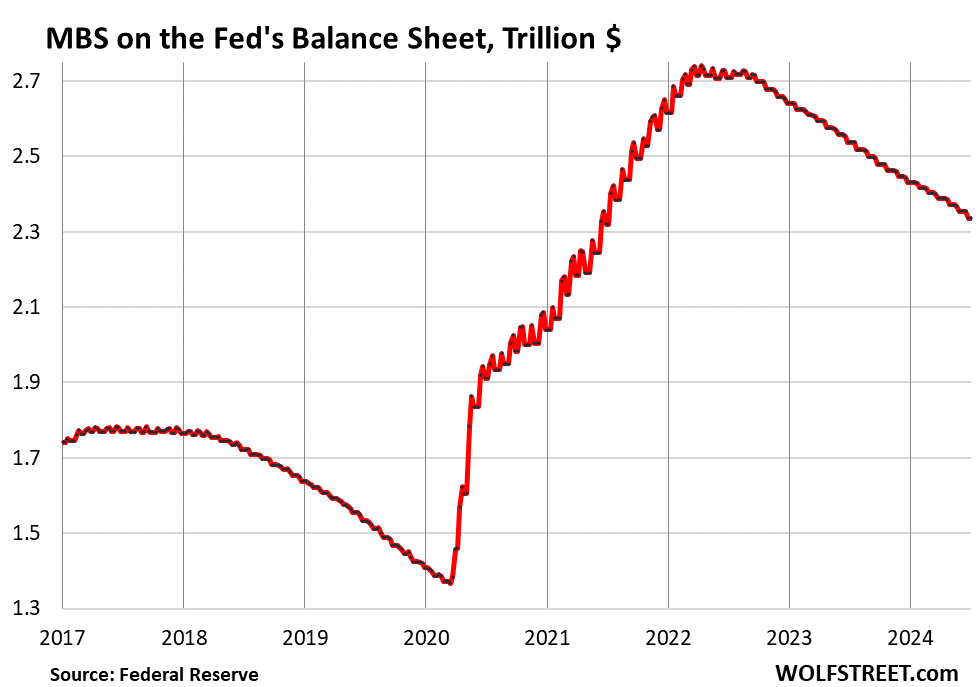
Bank liquidity facilities.
Only two bank liquidity facilities currently show a balance: The Discount Window and the Bank Term Funding Program (BTFP). The other bank liquidity facilities — Central Bank Liquidity Swaps, Repos, and Loans to the FDIC — are either at zero or near zero.
Discount Window: +$200 million in June, to $6.4 billion. During the bank panic in March 2023, loans had spiked to $153 billion.
The Discount Window is the Fed’s classic liquidity supply to banks. The Fed currently charges banks 5.5% in interest on these loans – one of its five policy rates – and demands collateral at market value, which is expensive money for banks. In addition, there’s a stigma attached to borrowing at the Discount Window. So banks don’t use this facility unless they need to, though the Fed has been exhorting them to make more regular use of it.
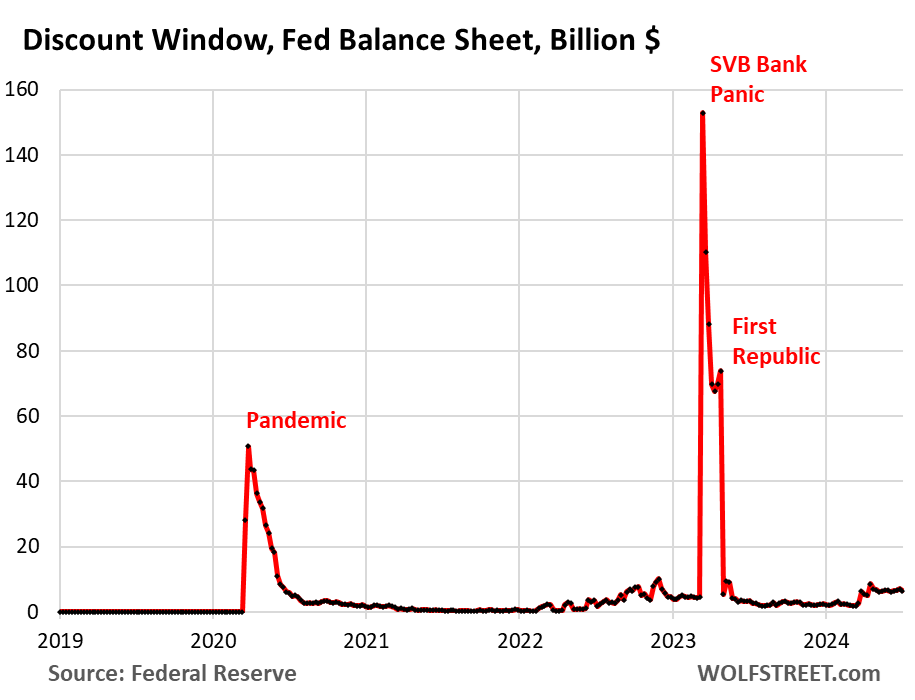
Bank Term Funding Program (BTFP): -$1.6 billion in June, to $106 billion.
The BTFP had a fatal flaw when it was cobbled together over a panicky weekend in March 2023 after SVB had failed: Its rate was based on a market rate. When Rate-Cut Mania kicked off in November 2023, market rates plunged even as the Fed held its policy rates steady, including the 5.4% it pays banks on reserves. Some banks then used the BTFP for arbitrage profits, borrowing at the BTFP at a lower market rate and then leaving the cash in their reserve account at the Fed to earn 5.4%. This arbitrage caused the BTFP balances to spike to $168 billion. The Fed shut down the arbitrage in January by changing the rate. It also let the BTFP expire on March 11, 2024. Loans that were taken out before that date can still be carried for a year from when they were taken out. By March 11, 2025, the BTFP will be zero.
So over the next 8 months, the BTFP will remove another $106 billion from the balance sheet, on top of regular QT.
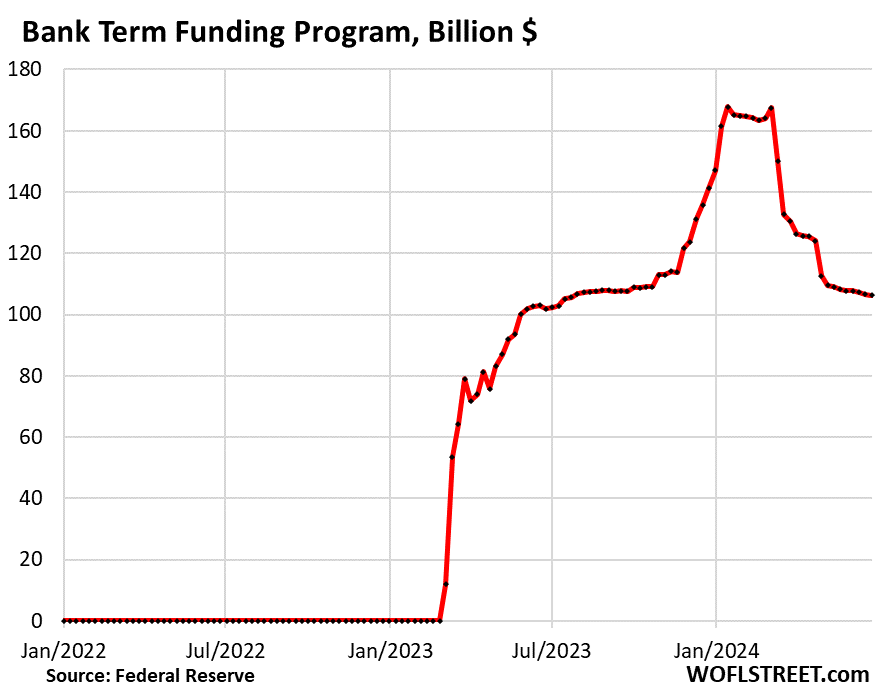
STAY INFORMED! Receive our Weekly Recap of thought provoking articles, podcasts, and radio delivered to your inbox for FREE! Sign up here for the HoweStreet.com Weekly Recap.
Wolf Richter July 5th, 2024
Posted In: Wolf Street











